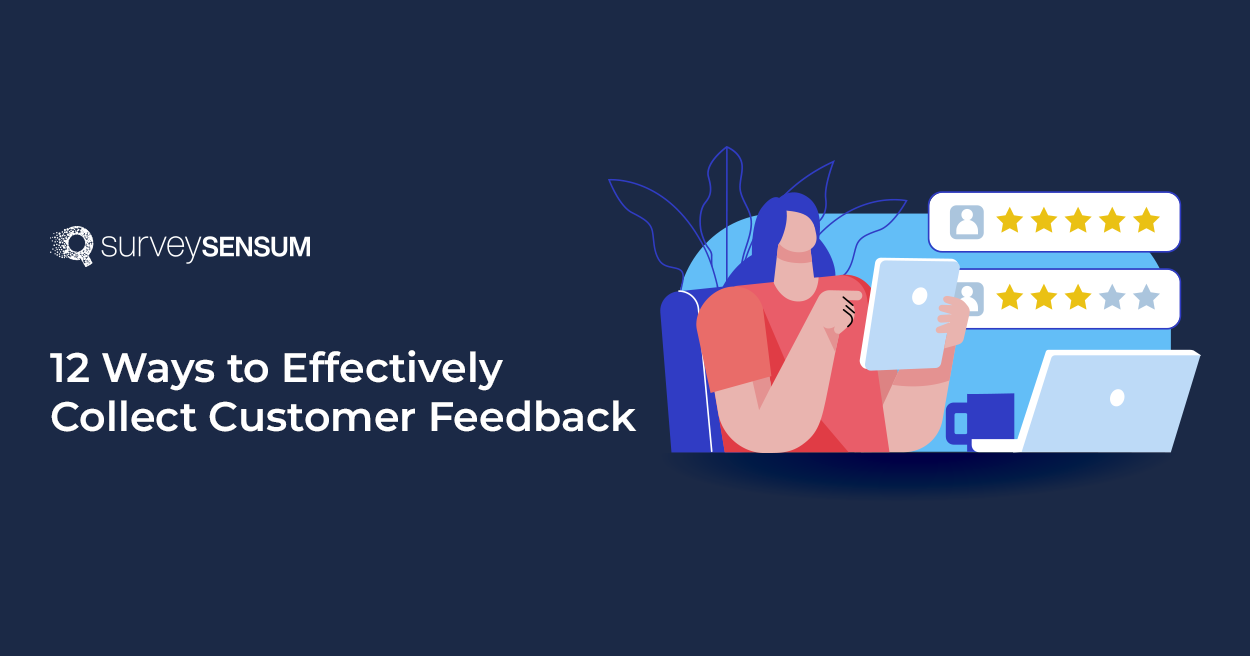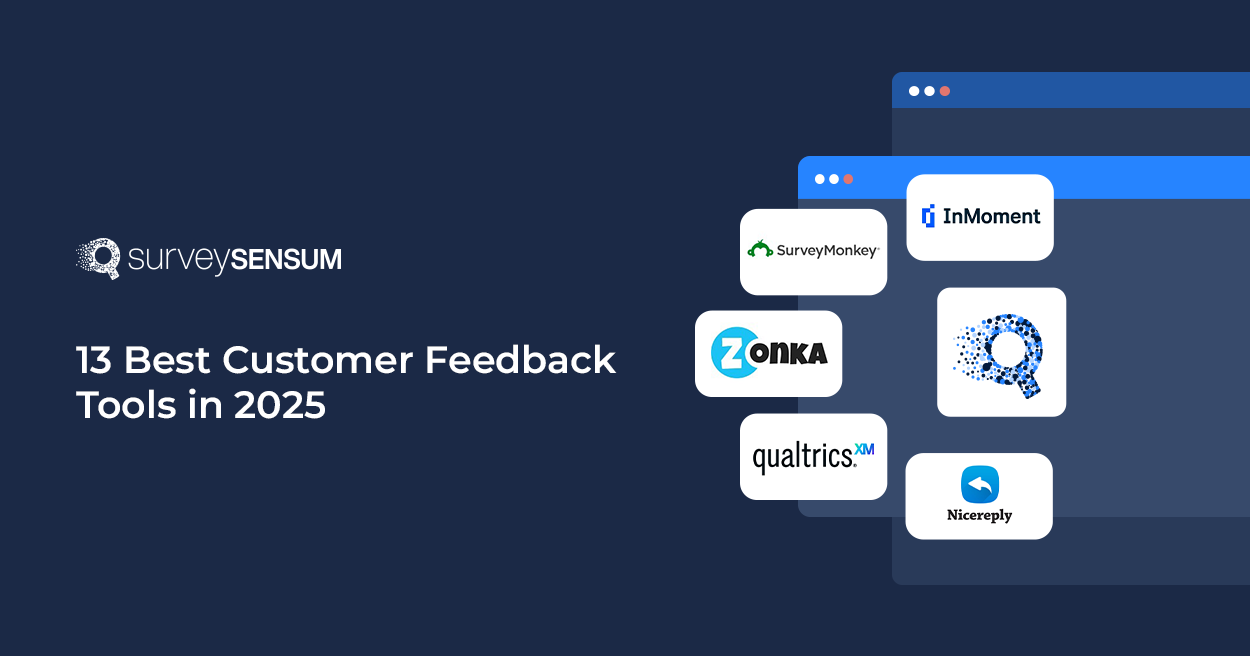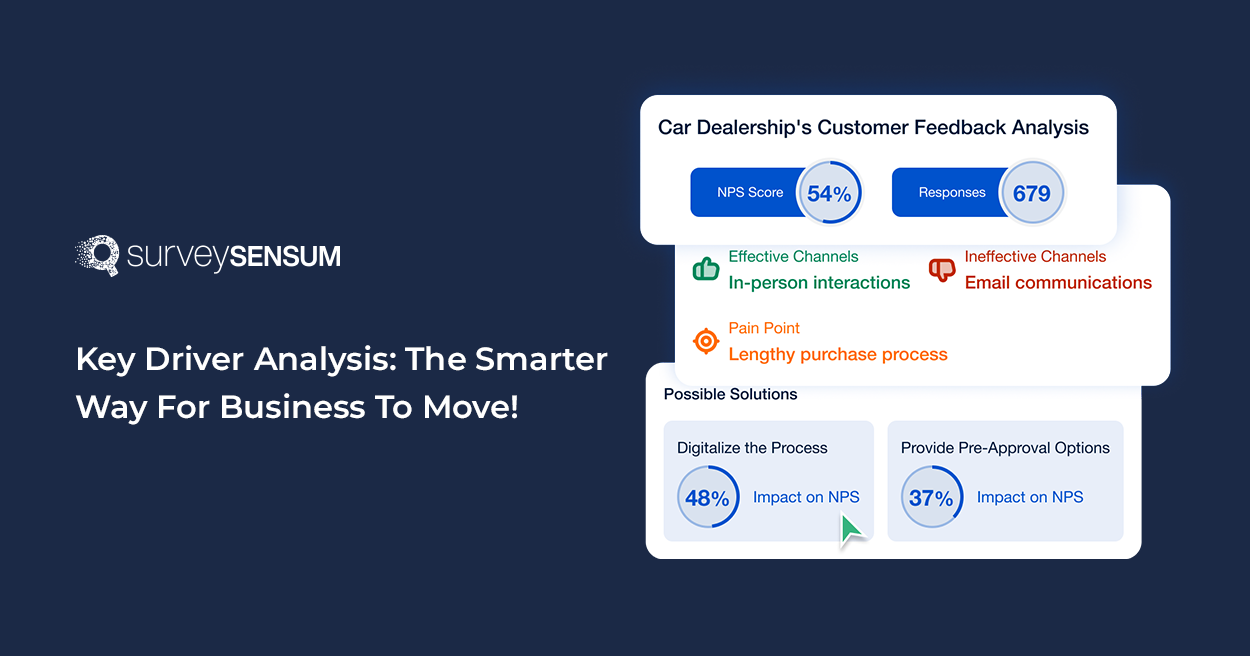
Imagine a company pouring money and resources into developing and improving its products, yet its numbers refuse to budge. What’s missing?
Without a structured approach to collecting customer feedback, businesses operate on assumptions rather than insights. This leads to poor market-fit products, higher churn rates, and ineffective marketing campaigns.
So, how do you bridge this gap and truly align your business with customer expectations? By implementing a robust customer feedback strategy.
This blog will talk about the 12 different ways in which you can collect customer feedback and understand your customer and their journey.
But first, let’s start with knowing what exactly is customer feedback.
What is Customer Feedback?
Customer feedback refers to the opinions, comments, and suggestions provided by customers regarding their experience with a product, service, or brand.
It encompasses a wide range of insights, including satisfaction levels, areas of improvement, preferences, and expectations. Customer feedback on Excel Invoice Receipt can be collected through surveys sent via email or business texting apps. It can also come from reviews, social media interactions, direct conversations, and other channels.
It plays a crucial role in helping businesses understand customer needs, identify pain points, and make informed decisions to enhance products or services.
So, let’s discuss some of the crucial importance of customer feedback and collecting customer feedback.
Why is Customer Feedback Important?
Harvard Business Review found that companies that actively use customer feedback to drive decision-making have higher growth rates than those that don’t.
Customer feedback is important for several reasons:
1. Improving Products and Services:
According to Forbes, companies whose products are customer-centric are 60% more profitable than the companies that are not.
Customer feedback provides valuable insights into what aspects of products or services are working well and what needs improvement. By understanding customer needs and preferences, businesses can iterate and enhance their offerings to better meet customer expectations.
2. Enhancing Customer Experience:
A study by PwC found that 32% of customers would stop doing business with a brand they loved after just one bad experience.
By listening to customer feedback, companies can identify pain points in the customer journey and take proactive steps to address them, thereby improving overall satisfaction.
3. Brand Advocacy:
77% of customers said they were likely to recommend a brand based on positive experiences.
Satisfied customers are more likely to become advocates for a brand. Positive feedback and testimonials from happy customers can serve as powerful endorsements, attracting new customers and fostering trust in the brand.
4. Building Customer Relationships:
A survey by Harvard Business Review found that companies who actively engage with customer feedback and respond to reviews experience higher customer satisfaction rates and increased loyalty.
Actively soliciting and responding to customer feedback fosters a sense of trust and loyalty, strengthening the relationship between the brand and its customers.
5. Reducing Churn:
According to research by Bain & Company, increasing customer retention rates by just 5% can lead to a 25% to 95% increase in profits.
By addressing issues highlighted in customer feedback, businesses can prevent customer dissatisfaction and reduce churn rates. Proactively resolving issues, reducing churn, and improving customer satisfaction can help retain customers and increase their lifetime value.
Addressing issues highlighted in feedback can prevent customer dissatisfaction and reduce churn rates. Happy customers are more likely to stay loyal and continue doing business with a company. Offering high-quality Canvas Photos Prints for Wall Art can further enhance customer satisfaction by providing personalized and visually appealing décor options.
6. Boosting Brand Reputation:
A study by BrightLocal revealed that 87% of consumers read online reviews for local businesses, and 94% of consumers say that positive reviews make them more likely to use a business.
Positive feedback and testimonials from satisfied customers can enhance a company’s reputation and attract new customers through word-of-mouth recommendations.
Hence, customer feedback is a valuable source of actionable insights that can drive business growth and enhance overall competitiveness. Now let’s explore the different ways in which customer feedback can be collected.
12 Ways to Collect Customer Feedback
Collecting customer feedback is crucial for understanding your audience, improving user experience, and making informed business decisions. Here are 12 effective ways to gather customer feedback:
1. Surveys
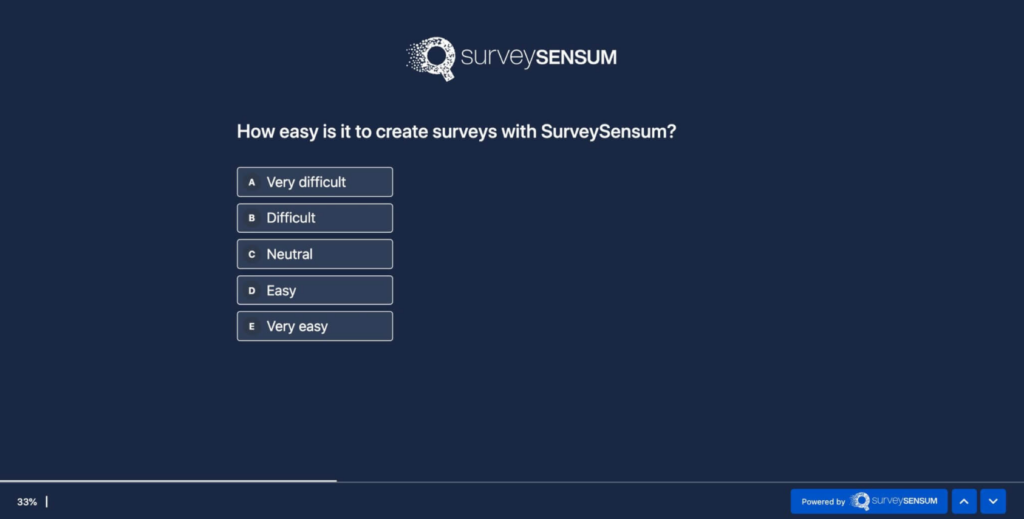
Customer surveys are one of the most important tools to collect customer feedback. Surveys are highly targeted, individualized, and focused. They are among the most effective ways to get client feedback. They provide a range of metrics and scales, like rating scales, popups, emoticons, single-choice questions, and more, for gathering feedback.
A survey is a broad category into which it can be further subdivided based on the intended use. There are several kinds of customer satisfaction surveys such as NPS, CES, CSAT, onboarding, and CSI, all aimed at gathering feedback from customers for different objectives.
Each of these survey methods has its own strengths and weaknesses, depending on where and when you use it.
- Email Surveys: Ideal for post-purchase feedback to assess customer satisfaction and product quality. For example, after purchasing a product, customers can share detailed insights about their overall experience.
- Pop-Up Surveys: Best for capturing real-time impressions during website or app use.
- NPS Surveys: Excellent for measuring overall loyalty and likelihood to recommend your brand. For example, Apple uses NPS to assess customer loyalty across its ecosystem.
- CSAT Surveys: Perfect for evaluating satisfaction with a specific product, service, or interaction. A quick smiley-based CSAT survey post-customer service interaction works well here.
2. Email Requests
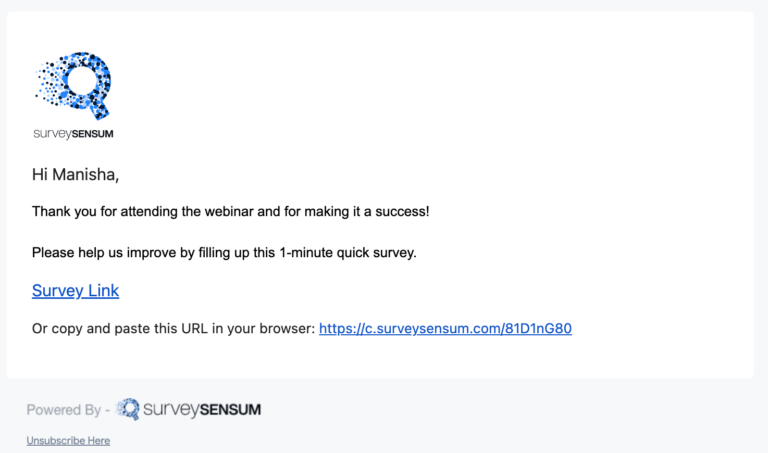
87% of brands say that email marketing is very critical to their business.
Email is a productive tool for following up with your customers who visit your website. You can automate the process of gathering feedback through emails with robust customer feedback tools. All you need to do is set the triggers after which emails are sent such as post-purchase, new subscriber, etc.
However, ensure the following:
- It’s crucial to send targeted email surveys to customers after they engage with your business.
- Personalize these surveys based on the customer’s browsing history or behavior to make them more relevant and engaging. Consider using email templates designed to ask for testimonials from customers. They streamline the process and encourage valuable feedback about their experiences.
- Trigger emails after key interactions (e.g., purchase, support call, or subscription start).
3. Feedback Forms
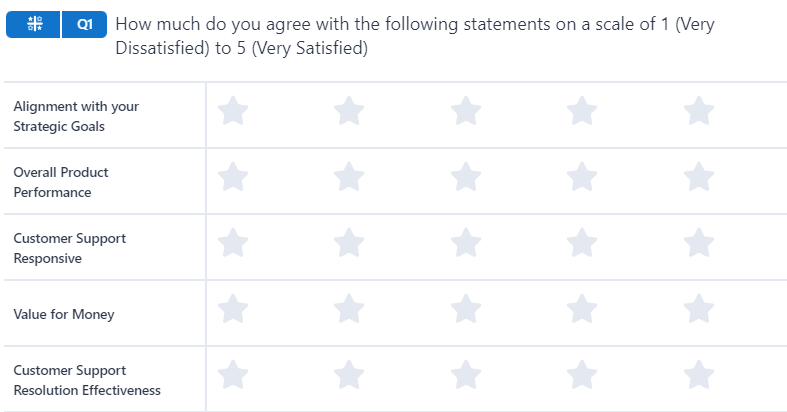
Feedback forms are structured tools used by businesses to gather feedback from customers. They are designed to collect specific information and insights related to a product, service, or overall customer experience.
They allow businesses to gather detailed and structured feedback, enabling them to understand customer preferences, identify areas for improvement, and make data-driven decisions to enhance products or services.
For example, a feedback form for a website will include questions for ratings on UX, content relevance, and open-ended text boxes for detailed comments.
However, keep these points in mind while launching your feedback forms,
- Keep it focused – use targeted questions to avoid survey fatigue.
- Offer a mix of question types by including different types of rating scales for quick responses and open-ended text boxes for detailed insights.
- Make it accessible by embedding the form on your website, including a link in emails, or sharing it via a digital business card for broader reach.
- Automate collection and customer feedback analysis by leveraging a feedback management tool to streamline responses and uncover trends.
By strategically using feedback forms, businesses can make data-driven decisions that drive customer satisfaction and business growth.
Build better surveys in seconds with AI! Whether it’s an NPS survey, customer feedback form, or employee experience survey, SurveySensum’s AI-powered survey builder provides customizable templates and relevant questions so you always ask what matters most.
4. In-App Feedback
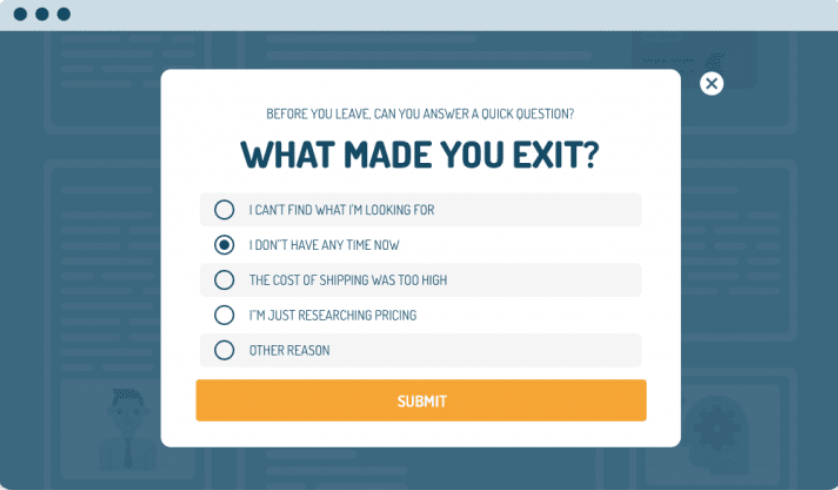 In-app feedback is a powerful method for collecting customer feedback directly within a mobile app environment. By integrating in-app feedback forms or prompts, businesses can create seamless and convenient opportunities for users to share their thoughts, rate their experiences, and provide valuable comments in real-time without leaving the app.
In-app feedback is a powerful method for collecting customer feedback directly within a mobile app environment. By integrating in-app feedback forms or prompts, businesses can create seamless and convenient opportunities for users to share their thoughts, rate their experiences, and provide valuable comments in real-time without leaving the app.
To start collecting in-app feedback, integrate feedback forms or prompts at strategic touchpoints within your app. These touchpoints could include after completing a transaction, finishing a task, or using a specific feature for the first time. Ensure that the feedback mechanism is easily accessible and intuitive for users to engage with.
5. Feedback Through Social Media Channels
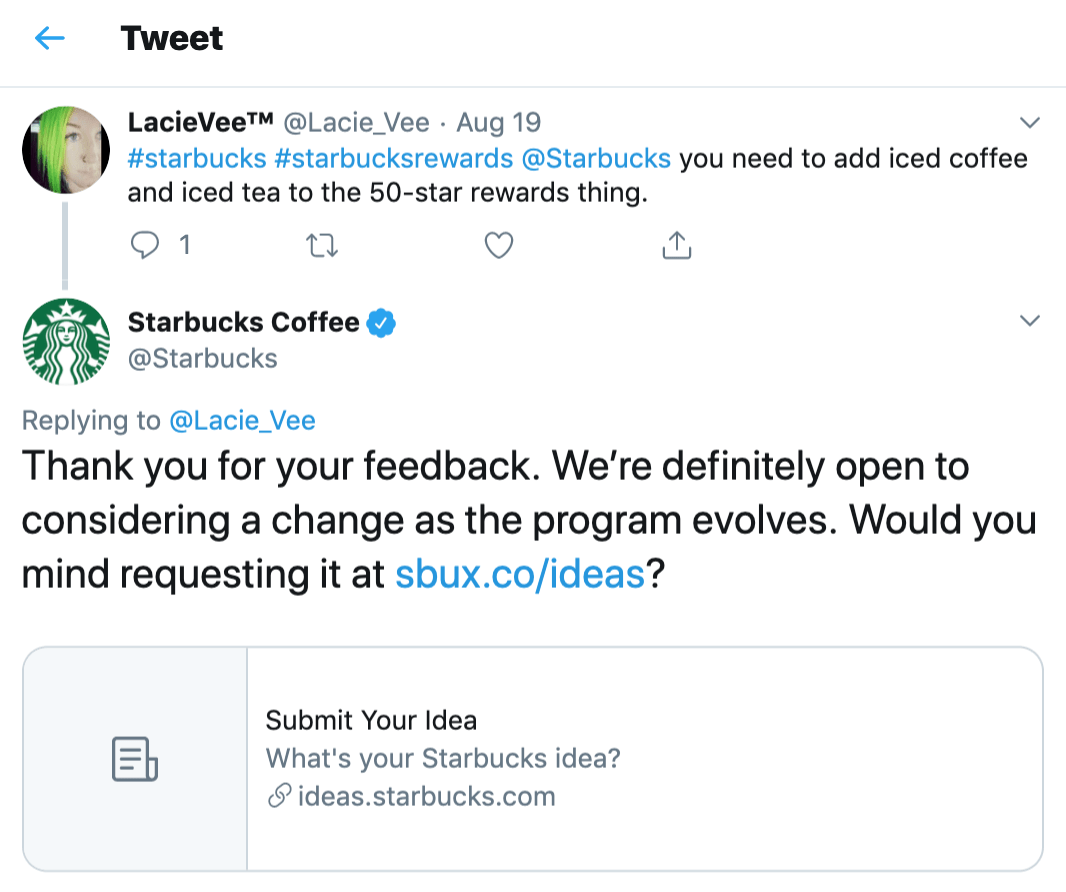
Social media listening involves actively monitoring social media platforms such as Facebook, Twitter, Instagram, LinkedIn, and others for mentions, reviews, comments, and discussions related to your brand, products, or services.
This process goes beyond simply having a social media presence; it involves systematically tracking and analyzing what customers and the public are saying about your business across these channels. This process extends beyond just maintaining a social media presence; it encompasses systematically monitoring and analyzing the conversations and feedback regarding your business across these channels, ultimately aiming for better social media results.
By tracking and interpreting online conversations, businesses can:
- Identify Brand Sentiment: Understand whether customers have a positive, neutral, or negative perception of your brand.
- Respond to Customer Issues Quickly: Address complaints and feedback in real-time to improve customer satisfaction.
- Monitor Competitor Insights: Learn from competitor strategies and capitalize on industry gaps.
- Improve Marketing & Product Strategy: Adapt messaging and product offerings based on customer needs.
Now that you know the different ways of collecting customer feedback, why wait? Deploy them all today with SurveySensum!
6. Feedback Widgets

Feedback widgets are interactive tools that businesses can integrate into their websites or mobile apps for real-time customer feedback collection from visitors. These widgets serve as a direct channel for customers to share their opinions, suggestions, and experiences while browsing or using a product or service.
One of the key advantages of feedback widgets is their ability to capture insights at the moment of interaction but at the customer’s will, providing businesses with timely and relevant feedback. By strategically placing these widgets on key pages, such as product pages, checkout pages, or customer support portals, businesses can gather feedback at critical touchpoints in the customer journey.
Feedback form vs Feedback Widget:
A feedback form is typically a standalone application where users can provide detailed feedback about their experiences. It includes text boxes, rating scales, multiple-choice questions, etc. On the other hand, a feedback widget is a smaller and more convenient tool that is usually embedded directly into an application interface. With this, users can quickly submit feedback or report issues without leaving the current page.
Overall, the choice between a feedback form and a feedback widget depends on the specific goals and preferences of the business.
7. Customer Interviews
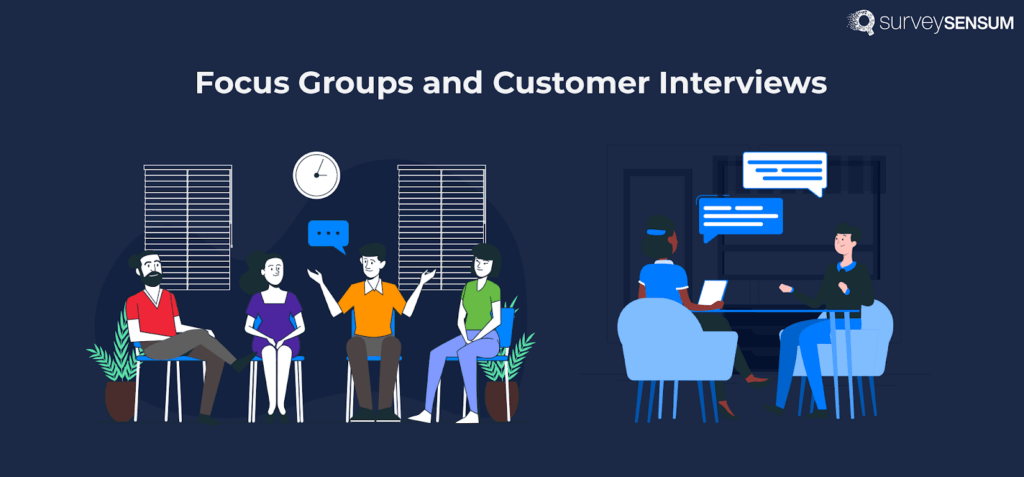
Customer interviews are a research method where businesses engage in one-on-one conversations with customers. They are commonly used for qualitative research purposes for businesses to gain deeper insights into their customer experiences, pain points, and suggestions.
These interviews are typically conducted in person, over the phone, or via video calls, allowing for direct and personalized interactions. One of the key advantages of customer interviews is the opportunity to ask open-ended questions, which encourages customers to provide detailed and nuanced responses. This allows the company to review the responses and provide a nuanced customer support experience.
Customer interviews are ideal for:
- Product Development: Gathering in-depth product feedback before launching a new product or feature.
- Customer Experience Improvements: Understanding pain points in the buying journey or service interactions.
- Market Research: Exploring customer needs, motivations, and behaviors to guide business strategy.
- Post-Purchase Feedback: Learning why customers chose a product and how they use it.
8. Usability testing

Testing for usability gives you the ability to gauge how user-friendly your product is – enabling you to get input from a specific user base to find usability issues.
By conducting usability testing, companies can uncover usability problems early in the development cycle, improve user satisfaction, increase productivity, and ultimately enhance the overall user experience.
9. Live Chat Data
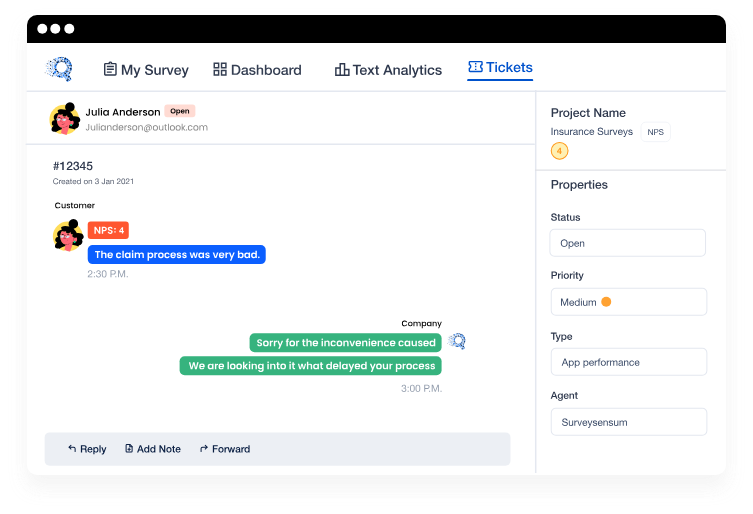
Analyzing live chat data is another tactic for gathering consumer feedback. In order to enhance customer success and customer service, live chat platforms can be useful tools for gathering client feedback.
Here’s how live chat data helps improve customer experience,
- Identifying Common Customer Pain Points: Reviewing past customer chat transcripts can reveal top customer complaints, such as difficulties with logging in, navigating the website, or completing purchases.
- Enhancing Customer Support: Understanding which inquiries take the longest to resolve helps businesses train support teams more effectively.
- Improving Product and Website Usability: If multiple users report confusion over a feature, the product team can prioritize improvements.
10. Online Reviews and Ratings
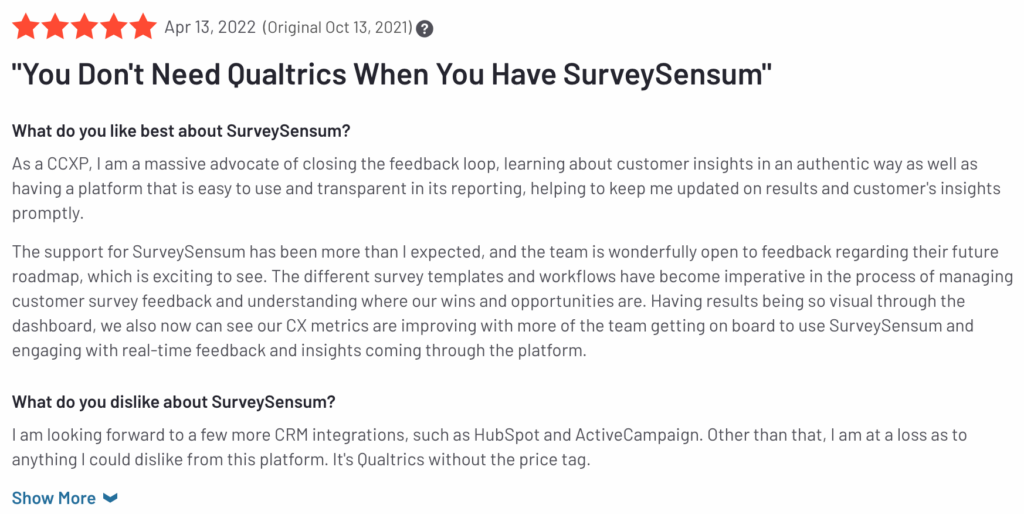
Monitoring online review platforms involves regularly checking for new customer reviews and ratings left by users who have interacted with your products or services. This process is essential for staying informed about customer sentiment and managing your online reputation effectively.
When monitoring these platforms, you should pay attention to both positive and negative reviews. While you should focus on the negative feedback, understand their issues, and close the feedback loop with them; don’t forget to take a second and thank all the customers who took their time leaving a good review for you. And, use those positive reviews on your websites, as customer stories, social media postings, and more — all in all increasing the credibility/ reputation of your brand.
11. Feedback Kiosks
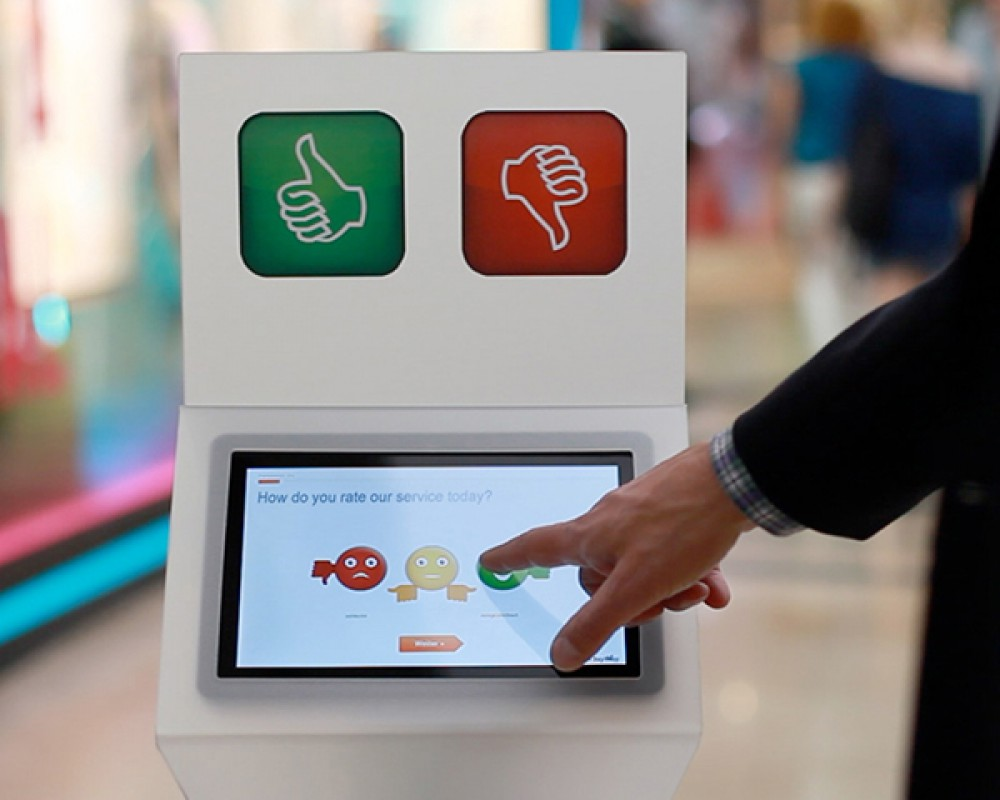
Feedback kiosks are physical stations strategically placed in locations such as retail stores, service centers, or public spaces to gather customer feedback. Windows kiosk mode can be used to securely configure feedback kiosks, ensuring a locked-down environment that only allows access to the feedback application. They are commonly used by businesses to prompt customers to provide their feedback at key moments, such as before making a purchase or after receiving a service.
For example, in a retail store, a feedback kiosk can be placed near the exit or checkout area, inviting customers to share their experiences about the shopping process, staff interactions, product availability, and overall satisfaction.
12. Online Polls
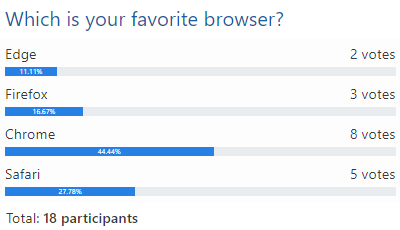
Online polls are an engaging and efficient way for businesses to gather insights into customers’ preferences, interests, and opinions. These polls leverage the interactive nature of digital platforms to quickly capture feedback from a large audience.
One of the key advantages of using online polls is the speed at which customers can participate and provide their responses. With just a few clicks or taps, customers can select their preferred option or share their opinions, making the process convenient and time-effective.
SurveySensum’s AI-powered survey builder instantly suggests the right questions, refines your survey structure, and optimizes for better engagement!
Let’s now discuss some tips for improving the feedback collection process.
Tips for Improving Customer Feedback Collection
Here are a few tips you can include in your customer feedback collection process for improving customer feedback processes.
- Personalize the Feedback Experience
- Trigger Surveys Based on Behavior: Send surveys after specific actions like a purchase, sign-up, or support interaction. (Example: Netflix asks for content ratings after watching a show.)
- Use Customer Data for Personalization: Address customers by name and reference their interactions. (Example: Spotify’s year-end “Wrapped” campaign collects user-generated feedback on listening habits.)
- Launch Journey-based Surveys
- Map the Customer Journey: Identify critical stages like awareness, purchase, post-purchase, and retention.
- Automate Surveys Based on Behavior: Trigger surveys after actions like a purchase or support interaction.
- Close the Feedback Loop
- Acknowledge Customer Input: Send a follow-up email thanking them for their response.
- Share Progress: If you can’t provide an instant solution, provide customers with details of the action taken at each step so that they are aware of the action. Also, provide information on how their feedback was incorporated into your product development.
If you want to take your feedback collection process to the next level, then integrate it with your other business processes. Let’s discuss.
Customer Feedback Integration with Other Business Functions
By integrating feedback into key areas such as marketing, customer support, and product development, businesses can create a more holistic and customer-centric approach.
Integrating Customer Feedback into Your Marketing Strategy
Customer feedback can offer a wealth of insights that marketers can use to refine targeting, messaging, and content strategies. Here’s how:
- Better Targeting: Feedback helps you understand your audience’s needs, preferences, and pain points, enabling more accurate customer segmentation. By knowing what customers like or dislike, you can fine-tune your target demographics and improve lead generation.
- Content Creation: Customer comments, reviews, and survey responses can inspire content that resonates with your audience. Address common questions, concerns, or interests in your blog posts, social media, and newsletters to make your content more engaging and valuable.
- Improved Messaging: Understanding customer sentiment helps you craft messages that align with their values and expectations. Tailor your communication strategies to emphasize the qualities customers appreciate most about your brand, product, or service.
Using Feedback to Improve Customer Support
Integrating customer feedback with customer support tools and CRM systems helps you respond more efficiently and personalize the support experience. Here’s how:
- Better Service with CRM Tools: By capturing customer feedback in CRM systems, support teams have a more comprehensive view of each customer’s history, preferences, and issues. This enables them to offer more personalized and efficient support.
- Identifying Service Gaps: Feedback surveys after customer service interactions can highlight areas where the support experience may be lacking, such as response time, resolution quality, or agent knowledge. By identifying these gaps, you can provide targeted training and improve your team’s performance.
- Empower Your Support Team with Insights: Customer feedback can serve as a training tool for support agents. When teams understand common issues or customer pain points, they can be better prepared to resolve similar cases efficiently.
Conclusion
Choosing the right way to collect customer feedback is essential for businesses to thrive in a customer-centric environment. The amalgamation of different types of methods deployed at the right times creates a perfect cycle of feedback collection which helps in understanding the customer at a deeper level.
Therefore, you need efficient customer feedback tools like SurveySensum to get the job done! You can launch a variety of surveys within minutes and at an affordable cost with the help of this tool. Its AI-enabled dashboard and features like Text Analytics also help you draw important insights from customer feedback.






